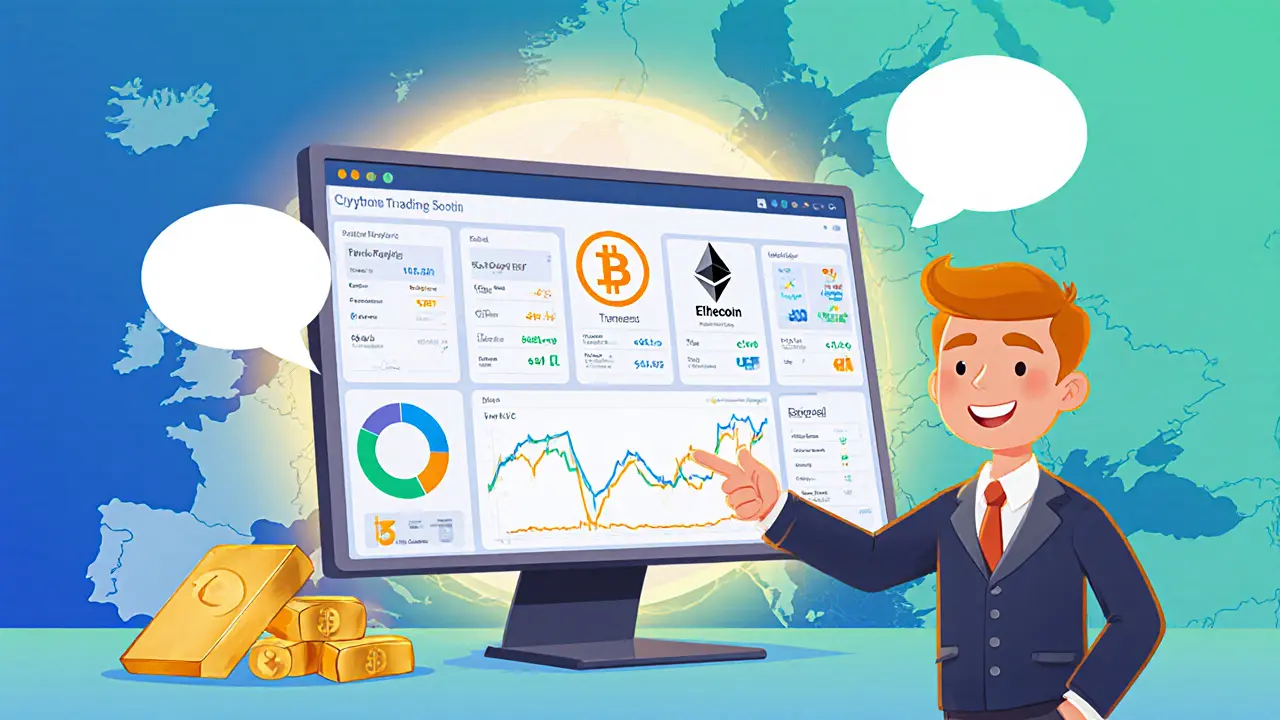A 2025 review of Bitpanda Broker covering fees, security, regulation, asset variety, user experience, and how it stacks up against competitors for European investors.
Crypto Exchange Europe: Reviews, Fees, Security & Regulation
When navigating crypto exchange Europe, the landscape of crypto trading platforms operating under European laws. Also known as EU crypto exchanges, it blends local compliance with global market access.
In the European market you’ll mainly see two flavors of platforms. A centralized exchange, an organization that holds user funds and matches orders on a proprietary order book offers instant order execution, deep liquidity, and often a polished UI, but it puts custodial risk in the hands of the operator. Conversely, a decentralized exchange, a peer‑to‑peer protocol that lets users trade directly from their wallets removes that custodian, giving users full control over private keys while typically charging higher network fees and delivering slower settlement. Both models must comply with the EU’s AML and KYC directives, yet the trade‑off between speed and custody defines the user experience.
crypto exchange Europe isn’t just about where you click “Buy”. The fee structure can make or break a trader’s bottom line. Centralized platforms usually publish a maker‑taker model—makers earn a rebate, takers pay a spread—while also adding withdrawal fees that vary by coin and jurisdiction. Decentralized venues, on the other hand, embed gas costs into each swap and often levy a small protocol fee that goes back to liquidity providers. Understanding these layers helps you predict how much of your profit will be eaten by transaction costs. Security adds another dimension: centralized services invest heavily in cold storage, insurance, and multi‑factor authentication, whereas decentralized protocols rely on smart‑contract audits and community watchdogs to guard against exploits.
Regulation is the glue that holds the European ecosystem together. The Markets in Crypto‑Assets (MiCA) framework, set to roll out across the EU, will standardize token classifications, require licensing for service providers, and impose strict disclosure rules. Platforms that already hold a license from a national regulator—like France’s Autorité des Marchés Financiers or Germany’s BaFin—are likely to enjoy smoother cross‑border operations and higher user trust. At the same time, DeFi projects must navigate a gray area, often operating under no‑license status but still subject to consumer protection laws. Keeping an eye on how each exchange aligns with MiCA can save you from future legal hassles.
Beyond fees and compliance, the user experience hinges on liquidity depth and market coverage. A well‑liquified exchange lets you execute large orders without slippage, which is crucial for institutional traders and high‑volume hobbyists alike. European‑focused exchanges often list a mix of global assets—BTC, ETH, USDT—as well as region‑specific tokens that cater to local projects. Some platforms also provide native staking, lending, or fiat on‑ramps, turning a simple trading interface into a full‑service financial hub. When you compare options, ask yourself: does the exchange offer the assets I need, at what cost, and under what security guarantees?
Below you’ll find a curated set of articles that break down these topics in detail. From in‑depth reviews of popular European exchanges like Paribu and Bitnomial to guides on fee calculations, security best practices, and the upcoming MiCA regulations, the collection equips you with the knowledge to pick the right platform for your trading style. Dive in and discover which crypto exchange Europe aligns with your goals.

